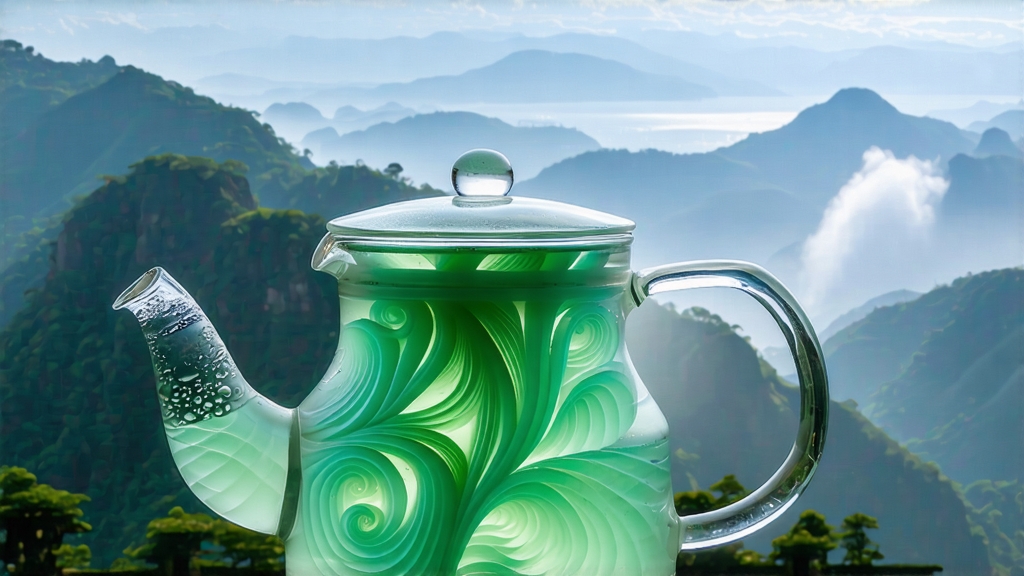
Among the pantheon of Chinese green teas, few names evoke as much poetry and precision as Biluochun. Literally “Green Snail Spring,” the tea is prized for its tiny spiral-shaped leaves, intoxicating fruit-floral bouquet, and a history that intertwines imperial romance with lakeside terroir. To the international drinker accustomed to the flat blades of Longjing or the needle elegance of Huangshan Maofeng, Biluochun offers a sensory detour: a tea that smells of peach and narcissus, tastes of sweet snow peas, and unfurls in hot water like a slow-motion firework. This essay unpacks the cultivar’s story from mountain to cup, guiding the curious brewer toward the quiet drama of one of China’s most fragrant greens.
-
Origins: when the tea frightened a nun
Legend places Biluochun’s birth in the Dongting Mountains of Jiangsu Province, a hilly spine that dives into the vast Taihu Lake. During the late Kangxi reign (1662-1722), a tea-picking nun roaming the misty peaks is said to have caught the spicy-sweet scent of roasted leaves wafting from a small cottage. Startled by the intensity, she exclaimed “Xia sha ren xiang!”—“so frighteningly fragrant!”—a phrase that locals later shortened to “Xia Ren Xiang,” the tea’s first commercial name. When the Kangxi Emperor visited Suzhou in 1699, magistrates presented the tea; the Son of Heaven found the name vulgar and rechristened it Biluochun, referencing the tight snail-like roll and the season of earliest picking. Whether apocryphal or not, the tale signals two constants: the tea’s arresting aroma and its intimate link to springtime. -
Terroir: lake, mist, and microclimate
Dongting’s eastern and western peaks rise only 200–300 m, but the surrounding freshwater acts as a thermal regulator, bathing the slopes in nightly fog that delays oxidation and concentrates amino acids. Sandy, slightly acidic soil rich in quartz and granite fragments drains quickly, forcing roots to struggle and thus intensifying leaf chemistry. Within the official designation “Biluochun National Geographic Indication” lie two sub-zones:- Dongshan (East Mountain): a true peninsula where peaches, loquats, and plums intercrop with tea, allowing pollinating fruit volatiles to settle on leaf surfaces.
- Xishan (West Mountain): an island reachable only by boat, cooler at night and prized for the highest grade “Mingqian” lots picked before the Qingming festival.
Together these micro-terroirs create the tea’s signature “fruit tunnel” nose that connoisseurs can sometimes parse into apricot, lychee, and even passionfruit.
-
Cultivars and grades
Although the region’s indigenous seed-grown trees (grouped under the landrace “Dongting Qunti”) remain the gold standard, clonal selections such as Fuding Dabaicha and Wuniuzao have been introduced to extend the picking window. Purists insist that only the archaic bushes yield the layered perfume, yet clones offer brighter liquor and higher yields. Chinese commercial grading is merciless:- Supreme Special (Teji): 6–7 mm single buds, 5,000 buds per 100 g, plucked within five days of spring equinox.
- Special Grade (Yiji): one bud and one unfolding leaf, ≤15 mm length.
- Grades 1–3: progressively larger leaf sets, harvested up to Guyu (Grain Rain).
International buyers often encounter “Superfine” labels that have no legal definition; aroma and shape remain the only reliable arbiters.
-
Craft: the 10-hour choreography
Biluochun is a quintessential “killing-green” tea whose entire processing cycle must finish the same day the leaves leave the bush. Picking starts at dawn when 55 % of the buds still wear their night dew; dew acts as a natural lubricant preventing fracture during later rolling. Leaves are delivered in 0.5 kg bamboo trays within 90 minutes, spread 2 cm thick to wither for 60–90 minutes under shade fans that drop surface moisture to 68–70 %.
Fixation follows: drums set at 160 °C for 40 s, then 130 °C for 80 s, denaturing polyphenol oxidase while